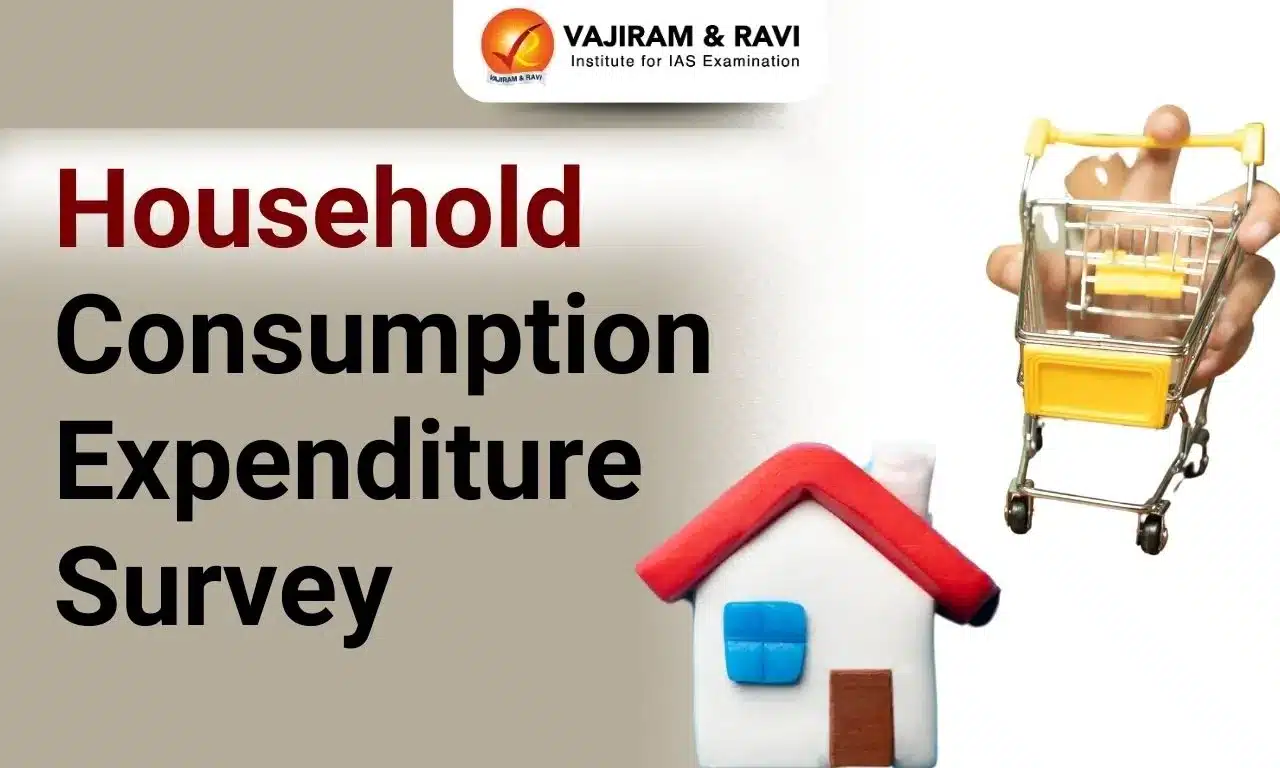Household Consumption Expenditure Survey Latest News
Recently, the Ministry of Statistics and Programme Implementation (MoSPI) published the summary findings of the second of the two consecutive surveys on household consumption expenditure survey.
About Household Consumption Expenditure Survey
- It is designed to collect information on consumption and expenditure of the households on goods and services.
- The survey provides data required to assess trends in economic well-being and to determine and update the basket of consumer goods and services and weights used for the calculation of the Consumer Price Index. Data collected in HCES is also used to measure poverty, inequality, and social exclusion.
- The Monthly Per Capita Consumption Expenditure (MPCE) compiled from HCES is the primary indicator used for most analytical purposes.
Key Highlights of the Household Consumption Expenditure Survey
- There is a persistent decline in urban-rural consumption difference across India’s major states continuing in 2023-24.
- The average MPCE is on the rise across all Household types in rural and urban Areas.
- Among 18 major states, the difference between urban and rural average monthly per capita expenditure (MPCE) of households is the lowest in Kerala, followed by Punjab, Andhra Pradesh (AP) and Bihar.
- Consumption inequality, both in rural and urban areas, for almost all the 18 major states has declined in 2023-24 from the level of 2022-23.
- At all-India, the Gini coefficient of consumption expenditure has declined to 0.237 in 2023-24 from 0.266 in 2022-23 for rural areas and to 0.284 in 2023-24 from 0.314 in 2022-23 for urban areas.
Household Consumption Expenditure Survey FAQs
Q1: Who releases the household consumption expenditure survey?
Ans: The Ministry of Statistics and Programme Implementation (MoSPI)
Q2: What is the household expenditure survey?
Ans: The Household Consumption Expenditure Survey (HCES) is designed to collect information on consumption and expenditure of the households on goods and services.
Q3:What are the three types of household expenditure?
Ans: Fixed Expenditure, Irregular Expenditure and Discretionary Expenditure
Source: PIB
Last updated on June, 2025
→ UPSC Notification 2025 was released on 22nd January 2025.
→ UPSC Prelims Result 2025 is out now for the CSE held on 25 May 2025.
→ UPSC Prelims Question Paper 2025 and Unofficial Prelims Answer Key 2025 are available now.
→ UPSC Calendar 2026 is released on 15th May, 2025.
→ The UPSC Vacancy 2025 were released 1129, out of which 979 were for UPSC CSE and remaining 150 are for UPSC IFoS.
→ UPSC Mains 2025 will be conducted on 22nd August 2025.
→ UPSC Prelims 2026 will be conducted on 24th May, 2026 & UPSC Mains 2026 will be conducted on 21st August 2026.
→ The UPSC Selection Process is of 3 stages-Prelims, Mains and Interview.
→ UPSC Result 2024 is released with latest UPSC Marksheet 2024. Check Now!
→ UPSC Toppers List 2024 is released now. Shakti Dubey is UPSC AIR 1 2024 Topper.
→ Also check Best IAS Coaching in Delhi
























